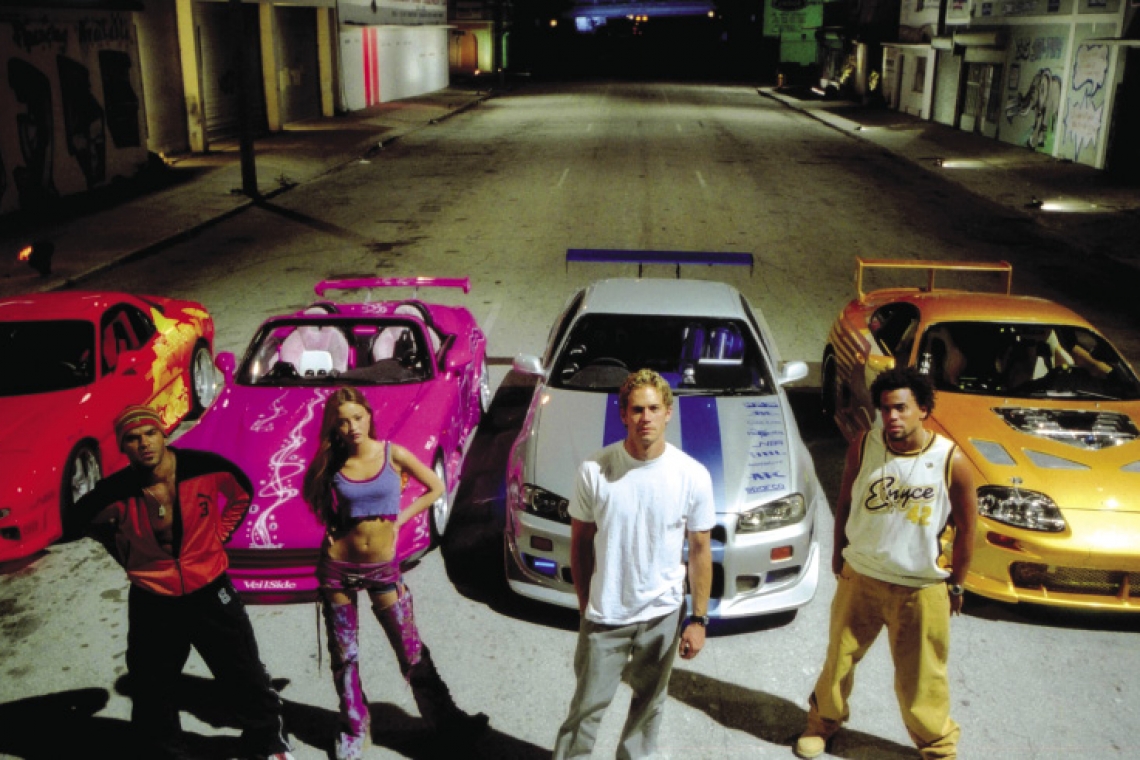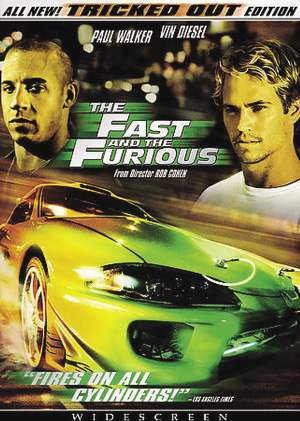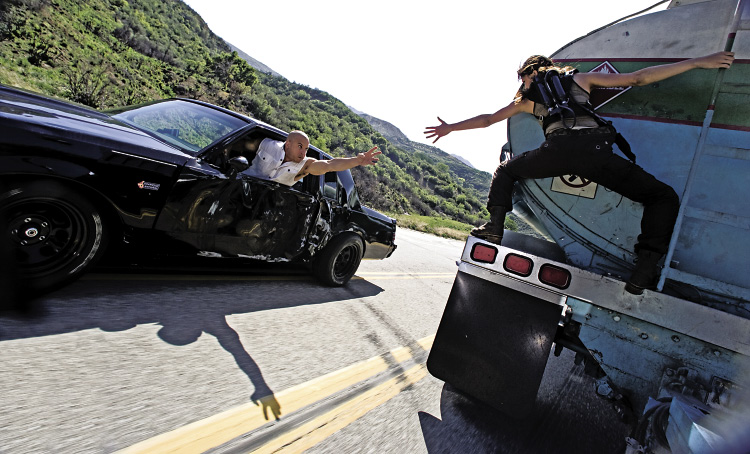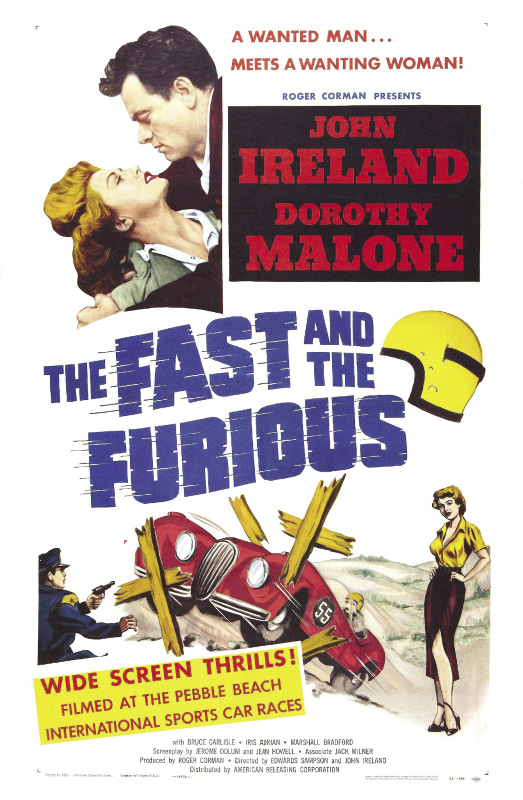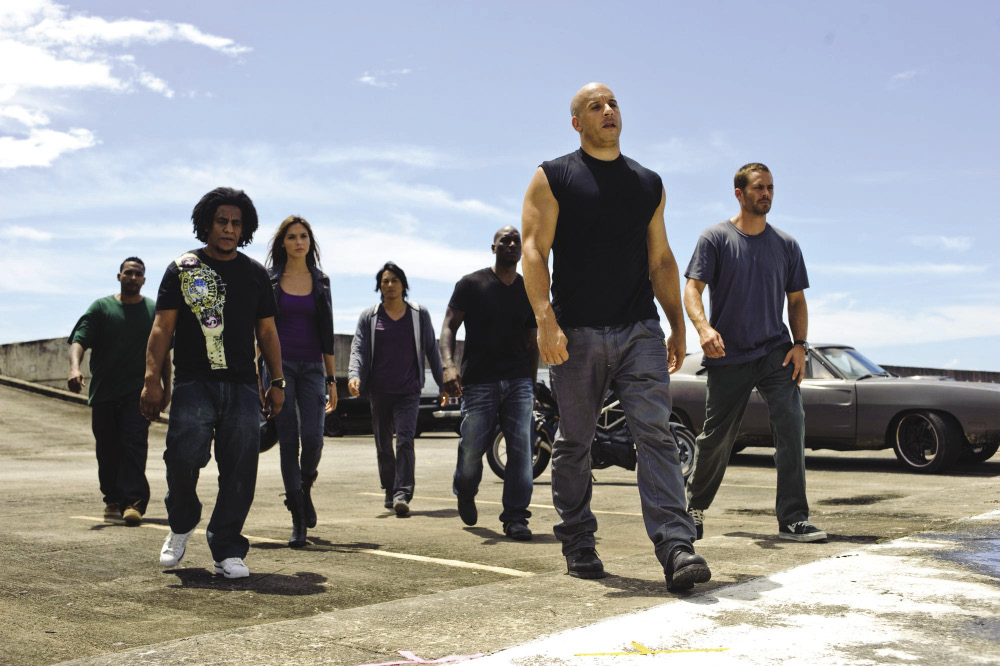Photography Courtesy of NBC Universal
Since the turn of the new millennium, film-going car enthusiasts have looked to The Fast and the Furious (FnF) to fulfill their big screen needs for thrilling action, sexy ladies and hot cars. Beginning in 2001 with The Fast and the Furious (FnF1), the franchise has grossed more than $1.5 billion at the box office over the first five films.
The newest edition, Fast & Furious 6 (FnF6), is set to hit theaters May 24. It will really be about celebrating some of the most iconic cars seen throughout the series. So fasten your seat belt and enjoy the ride ahead of this summer’s next blockbuster!
Where it all began
Before diving into the films, a little primer on the origins of the movies is in order. Even though FnF1 debuted in 2001, it was technically the second one in the franchise. The first Fast and the Furious came to the silver screen in 1955 and stars John Ireland (who most famously plays Jack Burden in the 1949 classic All the King’s Men) and Academy-Award winner Dorothy Malone, who picked up the honor for best supporting actress in Written on the Wind for her role as Marylee Hadley.
This film is only technically part of the FnF legacy because of the name, which was purchased for the 2001 edition. Even though the plot ultimately differs, the 1955 original has elements that come up in the modern films including jailbreaks, run-ins with the police and of course, a love for high-performance cars. In this case, the vehicle is a Jaguar XK 120 Roadster. Regardless of Ireland and Malone’s prominence, the car was definitely the star, being featured prominently throughout the course of the movie. It’s an element that the modern FnF pictures have stayed true to.
Leaping ahead: Fast & Furious 6
From the past we head right into the future with a sneak peek of The Fast & Furious 6.
For those of you who don’t know, FnF6 follows the events of Fast Five (FnF5), where Vin Diesel’s character, Dominic (Dom) Toretto and his crew amassed substantial wealth from a heist, but can’t return to the United States until Dwyane “The Rock” Johnson’s character (DSS Agent Luke Hobbs) offers them a way back by taking down a mercenary group of highly-trained drivers.
The film’s trailer revealed a number of interesting plots, the first being the return of Michelle Rodriguez’s character (and Dom’s thought-to-be-dead lover), Letty Ortiz. It was revealed near the end of FNF5 that she was alive, so we’ll have to wait and see how she interacts with her former crew – particularly since she appears to be a villain this time around.
Other details revealed some high-flying car stunts and a party highlighting the import tuner scene, something the series has been moving away from since The Fast and the Furious: Tokyo Drift (FnF3).
As for the cars, two definitely stand out – a 2013 Lucra LC470 and an SP Engineering and R’s-tuned BenSopra Nissan GT-R. The LC470 has all the looks and performance of a supercar and a zero-to-60 time of just 2.5 seconds. The GT-R on the other hand is like none other, sporting an incredibly-aggressive BenSopra body kit. This monster not only looks like the baddest car on the planet, it has the performance to match with a host of engine modifications, including a Switzer P800 turbo kit that ramps horsepower to 685 with 603 lb-ft of torque.
Now on to the most iconic cars in each film.
The Fast and the Furious
FnF1 established Diesel, Rodriguez, Paul Walker and Jordana Brewster’s characters as mainstays for subsequent titles. Directed by Rob Cohen, it managed to gross over $207 million at the box office. The concept was based on the Vibe Magazine article “Racer X,” which talked in-depth about the New York City street racing scene at the time.
Without question, the most iconic car seen in FnF1 is the 1994 Toyota Supra Mk IV 2JZ-GTE that Walker’s character, Brian O’Conner, drives in the movie. Instantly recognizable from the Lamborghini “DiablCandy” pearl-orange paint job and custom decals, this car helped the import tuner scene emerge from into the mainstream in the early 2000s.
The exterior also includes a Bomex spoiler and side/rear skirts, TRD composite hood and green ground effects. The interior boasts Stitchcraft Viper Blue suede upholstery, Sparco racing seats, a custom roll cage and TrimMaster carbon fiber dash trim.
As for performance, it gets 544 horsepower thanks to modifications made to the twin-turbo 2JZ-GTE engine that includ a Turbonetics T-66 ball-bearing turbo, NOS 100-hp nitrous oxide system, a GEeddy intercooler and RPS stainless steel custom headers.
For many people, this was an introduction into the tuner world and the Supra did a great job letting people know what the scene is all about. That’s why Brian’s Supra stood out as the most iconic car in film one.
2 Fast 2 Furious
2 Fast 2 Furious (FnF2), continues to establish Walker’s character and introduces Roman Pearce (played by Tyrese Gibson) and Tej Parker (played by Chris “Ludacris” Bridges), who also return in FnF5. The setting also switches from Los Angeles to Miami, with Diesel, Rodriguez and Brewster sitting out for this version.
Once again, Brian has the most memorable car – the 1999 Skyline GT-R. Featuring a C-West body kit and spoiler and a silver and blue stripe paint scheme, it stood out from other cars such as the hot pink S2000 because of its clean, no-nonsense look.
The interior sports upholstery that matches the exterior with a Sparco steering wheel and harnesses. The audio/video equipment includes an LCD TV, Infinity speakers and JBL amp.
As for performance, the vehicle is mostly stock with the exception of a K&N ram air intake, a HKS titanium exhaust and a Turbonetics intercooler.
Seeing a Skyline is always a thrill due to it’s rarity in North America, but it was also likely that general movie saw the Skyline for the first time, which made it a notable addition to the series.
The Fast and the Furious: Tokyo Drift
Director Justin Lin took over directing for FnF3 and has been doing the FnF films ever since. Of all the films, this one is probably the most unique in that it introduces a brand-new cast, including protagonist Sean Boswell (played by Lucas Black) and Han Seoul-Oh (Sung Kang). Han is really the only tie to the previous two films as an old friend of Dom’s – a storyline that later gets revealed in Fast & Furious (FnF4). Unfortunately FnF3 had the poorest showing of all the films at the box office, bringing in over $158 million.
There are quite a few noteworthy cars to choose from in FnF3, such as Twinkie’s Hulk-themed 2004 Volkswagen Touran, Han’s Mazda RX-7 and Takashi’s Nissan 350Z. But the car that stands out the most has to be Boswell’s 2006 Mitsubishi Lancer Evo IX.
Because FnF3 is a movie about the sport and culture of drifting, it makes sense the main character would have a car built for rally racing and drifting around sharp corners. While the engine remained stock with the exception of a RMR exhaust system, the AWD system was exchanged for RWD for the film. The body got an APR wide body kit and was lowered with Eibach springs. Filling the oversized fender wells are 19-inch Rays G-Games 99B wheels with 255/35 R19 Toyo Proxes T1R tires, with upgraded brake discs and caliper from Brembo.
Looking inside, you’ll find stock seats paired with JDM four-point harnesses. The stock steering wheel was swapped for a Sparco quick-release wheel and the factory radio opening is filled with an APR carbon fiber insert.
The overall visual theme to this car – and most of the cars seen in FnF3 (Hulk not included) – is more simple because the cars were similar to their competition drifter counterparts. With that in mind, the Lancer stands out if only because it is a rarity in terms of Japanese drift machines.
Fast & Furious 4
FnF4 saw Diesel, Walker, Rodriguez and Brewster all come back to reprise their roles from previous films. As sort of a “return to form” for the franchise, there were a number of memorable cars. The 1970 Chevelle returned, as did another Skyline, but the 1973 Camaro that Dom drives in the climax of this film seers itself into memory as the most memorable ride.
Interestingly, the Camaro is actually a replica of the “F-Bomb,” a car originally built by Tom Nelson of Nelson Racing Engines and Hot Rod Magazine’s David Freiburger.
The first word that comes to mind when you first gaze upon this car is menacing. Everything about it oozes an almost-malevolent energy. From the olive green paint job, the signature ‘73 Camaro grill, the Red Line Race Fab deck spoiler or the neat little decal by the front wheels, this car is one bad mother.
As dangerous as it may appear from the outside, it gets nastier when the hood is popped – a twin-turbocharged V8 capable of 1,500 hp is what greets you. There aren’t any other modifications and there really doesn’t need to be.
Near the end of FnF1, the Chevelle gave a bit of limelight to American muscle cars. In FnF4, the muscle car got even greater love. Even though they don’t appeal to every car enthusiast it’s awfully tough not to love everything about the F-Bomb.
Fast Five
In FnF5, Diesel, Walker, Brewster, Sung, Gibson and Bridges all return with the franchise debut of Johnson. This is the most successful FnF film to date, grossing an astronomical $626 million. It also got into hot water from Brazilian critics who felt stereotyped with the depiction of the film’s Rio de Janeiro setting.
The 2012 Dodge Charger R/T that Dom and Brian use to steal Hernan Reyes’ vault was the car that definitely stood out in FnF5. Previous to this movie, the Charger was featured in FnF1 and FnF4 but never received much attention until this film.
Featuring a sleek and aggressive matte charcoal paint job and a five-speed 5.7L Hemi V8, this is a car that both looks and acts the part of a powerhouse.
Any car that gets featured in a legendary car chase such as the vault chase scene should be remembered fondly. The Charger is a classic car and seeing its silver-screen legacy continue in the form of that awesome chase certainly does it justice.
In its 12 year history, FnF has become more than just a movie franchise with its name being used in numerous video games over the years on multiple platforms, including an arcade cabinet, Playstation 2, Playstation Portable and even iOS. Furthermore, diecast metal replicas, plastic models and radio-controlled cars have pushed the popularity of the many cars used throughout the series.
In addition to the featured films, there have also been two short films in the series – the first being Turbo-Charged Prelude, a film that sits chronologically between FnF1 and FnF2. It was a silent film and was included in FnF1’s “Tricked Out Edition” DVD release.
The second short film is called Los Bandoleros and is actually directed by Diesel. It falls somewhere between FnF2 and FnF4. This feature was included as a bonus on the Blu-Ray and special Edition DVD of FnF4 and can be downloaded for free on iTunes.
The Fast and the Furious is a movie franchise that has proven its staying power. Even beyond the upcoming Fast & Furious 6 there will be a Fast & Furious 7. This is a pretty amazing accomplishment, considering most series don’t make it beyond a sequel.
Needless to say, The Fast and the Furious has made a major impact on the tuner scene.
These movies have managed to take what was a niche hobby and bring it to the mainstream. Beyond the daring stunts and explosions, FnF is a celebration of car culture. It’s about beautiful cars, women, loud parties, big action and an adrenaline rush – something we can’t say we dislike either!
And this was all perfectly encapsulated by Diesel’s character in FnF1.
“I live my life a quarter-mile at a time...Nothing else matters, not the store, not the mortgage, not the garage, not my friends or any of their bullshit. For those 10 seconds or less, I'm free.”
Related Articles
 Red Bull Tokyo Drift 2025 – Mad Mike Whiddett and Hiroya Minowa Defy Gravity
Red Bull Tokyo Drift 2025 – Mad Mike Whiddett and Hiroya Minowa Defy Gravity
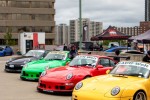 Driven, Toronto 2025
Driven, Toronto 2025
 FuelFest West Palm Beach: Cars, Culture & Community
FuelFest West Palm Beach: Cars, Culture & Community
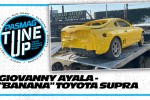 Giovanny Ayala's Banana Toyota Supra
Giovanny Ayala's Banana Toyota Supra
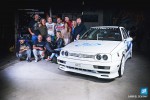 Not Soon Enough, Junior: Dominic Dubreuil's 1996 Volkswagen Jetta GLX VR6
Not Soon Enough, Junior: Dominic Dubreuil's 1996 Volkswagen Jetta GLX VR6
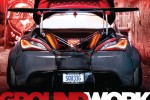 PASMAG #149
PASMAG #149


